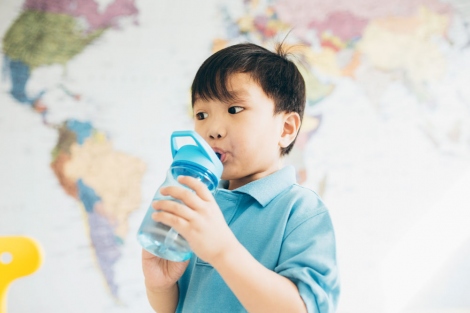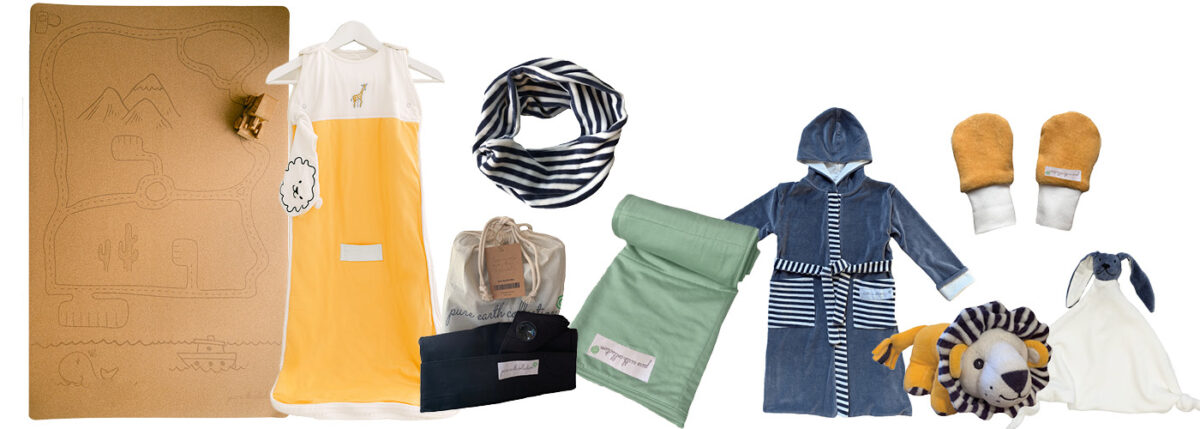A study by the University of Copenhagen tested water from reusable plastic drinking bottles and found worrying levels of chemicals in the drinking water. They tested three brands of water bottle, two of which were biodegradable plastics, and tested new bottles as well as very well used bottles.
We’re always banging the drum about avoiding plastic wherever possible, but even to us these findings are shocking. It’s worrying to think what kids are exposed to when they use plastic water bottles and, perhaps even more so, babies, when they’re given plastic milk bottles subjected to high heat in sterilising machines. My firstborn included as we used plastic feeding bottles and plastic breast-pump bottles (which we’d been given) for a few months before changing to glass alternatives. Of course, had I know more back then, we would have used glass from the start. But I think it’s really important not to worry about things which may have happened in the past and focus energy on making changes where you can going forward.
Read on for a summary of the study’s findings.

IS WATER FROM PLASTIC DRINKING BOTTLES SAFE?
The team who carried out this study wanted to re-create real life situations, whereby water is left in bottles for several hours and bottles are placed in the dishwasher. They filled bottles with standard tap water and tested the water after it had been left in the bottle for 24 hours, away from heat and out of direct sunlight. They found over 400 chemicals present in the drinking water after that time.
They also tested the water from bottles which had been put through the dishwasher and used immediately, and bottles which had been put through the dishwasher and then rinsed thoroughly five times after dishwashing. This drinking water was contaminated with over 3,500 chemicals, with many of these substances coming from the dishwasher soap itself, and the remainder thought to have been released from the plastic due to the high heat of the dishwasher which wears the plastic down. In the bottles which were rinsed after dishwashing, around 500 chemicals were present.
HOW BAD ARE THE CHEMICALS FOUND IN WATER BOTTLES?
Researchers are concerned about the types of chemicals they found in the drinking water for a few reasons:
- A large proportion of the substances found are unknown substances
- The chemicals which were identified in the water include known carcionagens and endocrine disruptors
- The toxicity of around 70% of the identified substances remains unclear
HOW TO MINIMISE EXPOSURE TO TOXINS FROM PLASTIC DRINKING BOTTLES
The studies show that, if you are going to use a plastic water bottle, it’s really important not to leave water sitting around in these bottles for long periods of time. Never expose the bottles to sunlight, direct heat or the dishwasher. And, if the bottle does make its way into the dishwasher, be sure to give in an extra rinse before filling it with your drinking water. This study also highlights the importance of choosing a non-toxic dishwasher soap as the soap residue was a key contributor to the chemical load.
CHOOSING A NON-TOXIC DRINKING BOTTLE
We recommend avoiding plastic drinking bottles altogether and opting for glass or stainless steal alternatives. This includes for children and also for baby’s feeding bottles. Below are some brands we love which make safer drinking bottles:
Klean Kanteen and One Green Bottle for stainless steel water bottles – both do a great selection for kids
Hevea for glass baby bottles
Lifefactory for glass water bottles and also baby bottles
For other plastic-free children’s products visit our award-winning range of sleepwear, clothing and toys.
All plastics are made by combining different toxic chemicals with petroleum. While some plastics pass current regulations for baby and children’s products, the reality is that these regulations only exclude a handful of the most well known toxic additives. Substances like BPA often get replaced by other chemicals, which many scientists fear are even more harmful to health, but currently fall under the regulatory radar. In addition, all plastics degrade and leach chemicals and micro-plastics over time, leading to poor indoor air quality and harmful micro-particles which pollute ecosystems and our homes.
IS PLASTIC SAFE FOR BABIES?
Pure Earth Collection are passionate about creating a range of plastic-free children’s products to help protect the health of little people and the planet. Including our unique, 100% natural kids travel bed, organic baby sleeping bags, plastic-free toys and much more.

Source: Journal of Hazardous Materials https://www.sciencedirect.com/science/article/pii/S0304389422001194
